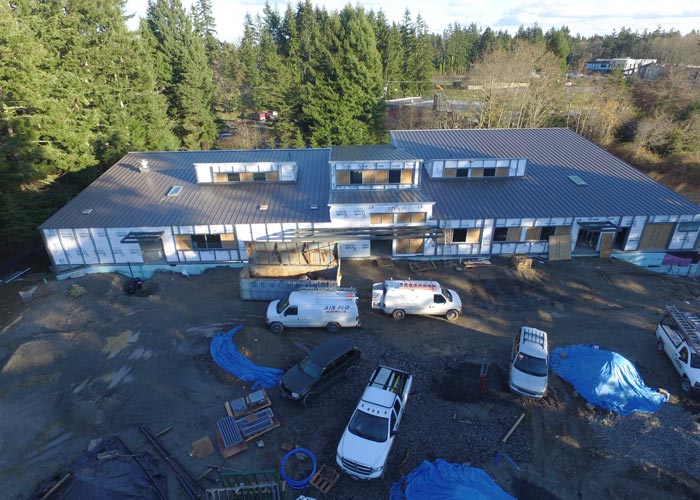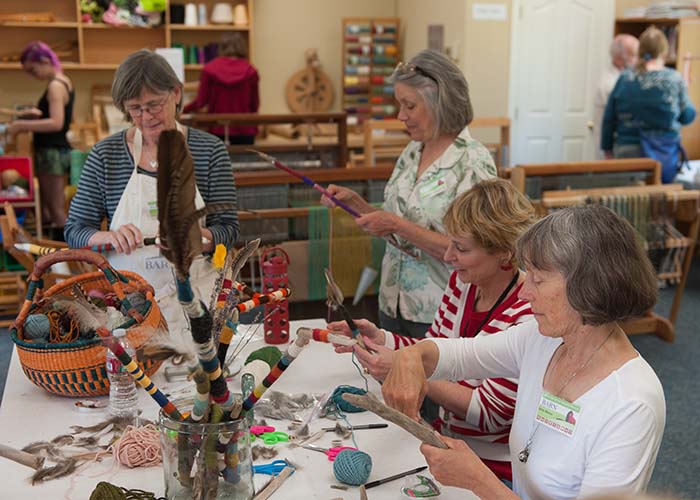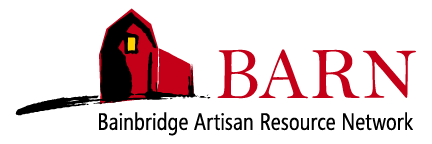BARN Begins
The idea for BARN took shape in 2012 as a group of woodworkers, fiber artists, and other community members came together around a common goal of finding a home for makers and artisans. They envisioned an active community place where people of all skill levels could pursue their interests and learn from each other in a regional center for hands-on creativity. With the dedicated work of a founding board, numerous other committed volunteers, and generous donors, land was purchased in late 2012.


Rolling BARN
In March 2014, BARN rented a temporary space in Rolling Bay (dubbed ‘Rolling BARN’) to test how BARN would operate in a permanent building. Memberships, classes, and public events were offered in this 2,000-square-foot facility. During the next two years, noted local architect Johnpaul Jones created a design for the permanent building and fundraising continued. Construction began in early 2016.
Ribbon Cutting
The grand opening of BARN’s new facility in June 2017 honored the work of the tremendous number of people involved in creating BARN. The traditional red ribbon spanned the front of the building and a long line of volunteers cut it in unison. The doors opened, the public invited in, and BARN was launched – a stunning testimony to the power of working together with vision, commitment, and generosity.

Land Acknowledgement Statement
“Every part of this soil is sacred in the estimation of my people. Every hillside, every valley, every plain and grove, has been hallowed by some sad or happy event in days long vanished.” – Chief Seattle 1854
The land on which we gather is within the aboriginal territory of the suq̀ʷabš “People of Clear Salt Water” (Suquamish People). Expert fisherman, canoe builders and basket weavers, the suq̀ʷabš live in harmony with the lands and waterways along Washington’s Central Salish Sea as they have for thousands of years. Here, the suq̀ʷabš live and protect the land and waters of their ancestors for future generations as promised by the Point Elliot Treaty of 1855.
